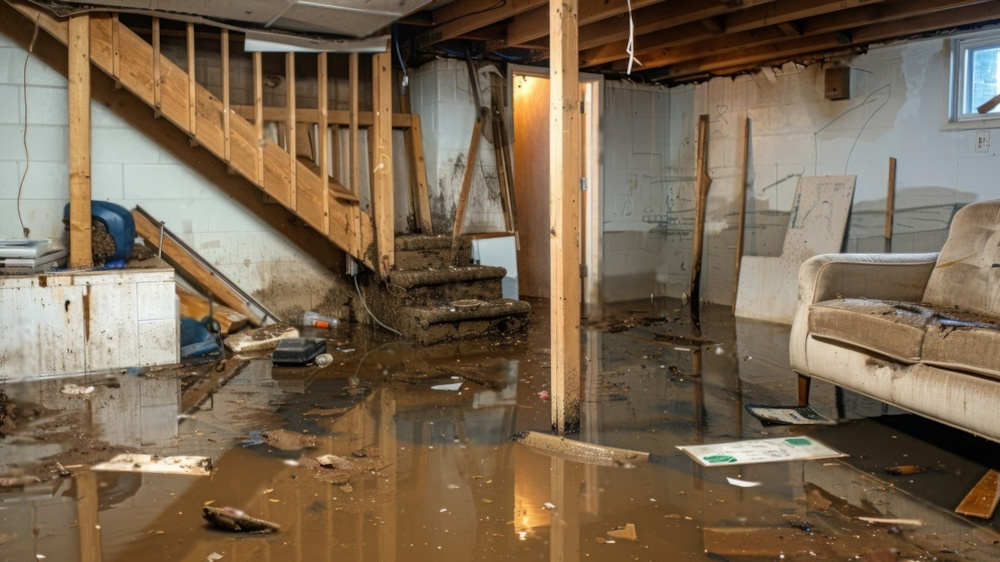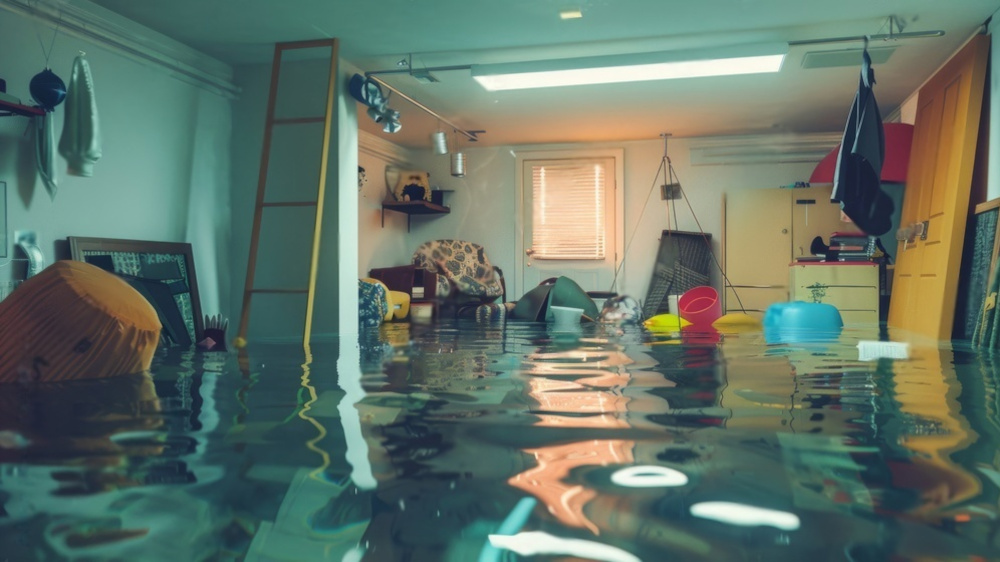Basement flooding is a common concern for homeowners, particularly in areas prone to heavy rainfall or rapid snowmelt. In New Zealand, where the weather can vary significantly between regions, having an effective drainage system is crucial to protect your property from the damaging effects of water intrusion. Whether you live in a coastal area with frequent storms, a region with heavy rainfall, or even in areas with high water tables, understanding the importance of proper drainage can save you from expensive repairs and the potential loss of valuable property.
In this comprehensive guide, we will discuss why basement flooding happens, how an effective drainage system can help prevent it, and what steps homeowners can take to ensure their property remains dry and protected. We’ll also look at the different drainage solutions available and provide practical advice tailored to New Zealand homeowners.
Understanding Basement Flooding
Basement flooding occurs when water seeps into your home’s basement or crawl space. This can happen due to a variety of reasons, such as excessive rainfall, poor drainage, or underground plumbing issues. Basement flooding can lead to extensive damage, including:
- Structural damage to the foundation
- Growth of mold and mildew
- Decreased air quality
- Loss of personal belongings stored in the basement
- Higher repair costs for walls, flooring, and insulation
Common Causes of Basement Flooding
- Poor Drainage Systems
A lack of adequate drainage around the foundation of your home is one of the most common causes of basement flooding. If your yard slopes toward your foundation or if the drainage system is not functioning properly, water will accumulate and seep into your basement. - Heavy Rainfall
New Zealand experiences a wide range of weather patterns, including heavy rainfall, particularly in areas like Auckland, Wellington, and the West Coast. Intense storms can overwhelm the drainage systems, leading to flooding. - Clogged Gutters and Downspouts
Gutters that are clogged with leaves, twigs, and debris prevent rainwater from flowing away from your home’s foundation. If gutters are not properly maintained, water can overflow and seep into the basement. - Foundation Cracks
Cracks in the foundation walls can allow water to enter the basement, especially during periods of heavy rainfall. Over time, these cracks can worsen and result in more significant flooding issues. - Water Table Issues
In some areas of New Zealand, particularly those near coastal regions or low-lying land, the water table may be high. This increases the likelihood of groundwater seeping into the basement, especially after periods of prolonged rainfall.
How Effective Drainage Systems Prevent Basement Flooding
An effective drainage system is essential to keep water away from your basement and prevent flooding. Here are several ways proper drainage can protect your home:
- Redirecting Water Away from the Foundation
Proper drainage systems, such as French drains, surface drains, and sump pumps, are designed to redirect water away from the foundation of your home. By guiding water to a safe drainage area, these systems ensure that your basement remains dry. - Preventing Water from Pooling Around the Foundation
If water pools around the foundation of your home, it can eventually seep into the basement. Installing surface drains or gutters that direct water away from the house ensures that this doesn’t happen. - Removing Excess Water
A well-maintained drainage system can help remove excess water from your property, preventing water accumulation that could lead to flooding. This is particularly important during heavy rainstorms when the volume of water is high. - Improved Air Circulation
Installing a well-functioning drainage system also helps with ventilation. Moisture buildup in the basement is a major contributor to mold and mildew growth. By reducing water around the foundation, you’ll prevent excessive moisture in the air, helping to keep the basement dry and healthy.
Types of Drainage Systems for Preventing Basement Flooding
There are various drainage solutions available to prevent basement flooding. The right system for your home will depend on your property's unique requirements, such as location, soil type, and the size of your basement. Below are some of the most effective options:
1. French Drains
A French drain is a trench filled with gravel or rock that contains a perforated pipe designed to redirect water away from the foundation. These systems are typically installed along the perimeter of the home or beneath the basement floor. French drains are highly effective at preventing basement flooding by draining excess water from the surrounding soil.
Benefits:
- Highly effective in areas with a high water table.
- Prevents water from pooling near the foundation.
- Low maintenance and long-lasting.
2. Sump Pumps
A sump pump is an electric pump installed in a sump pit in your basement. The pump removes water that has accumulated in the pit and discharges it outside the home. Sump pumps are particularly effective for homes in flood-prone areas where excess water needs to be removed quickly.
Benefits:
- Removes water quickly and efficiently.
- Can be used in conjunction with other drainage systems.
- Reduces the risk of groundwater flooding.
3. Surface Drains
Surface drains, or channel drains, are placed along the surface of your property to collect and direct water away from the foundation. These drains are typically installed along driveways, patios, and other areas where water tends to collect.
Benefits:
- Easy to install and maintain.
- Prevents water from pooling around the foundation.
- Effective in managing stormwater runoff.
4. Gutters and Downspouts
Maintaining gutters and downspouts is a simple yet essential part of any drainage system. Gutters catch rainwater that falls on your roof, while downspouts direct it away from your home’s foundation. Clogged gutters can cause water to overflow and flood the basement, so regular cleaning and maintenance are crucial.
Benefits:
- Easy to maintain.
- Prevents water from flowing directly toward the foundation.
- Reduces the likelihood of basement flooding caused by heavy rain.
5. Perimeter Drains
Perimeter drains are installed around the foundation of your home, either inside or outside the basement walls. These drains capture and divert water before it can seep into the basement. Perimeter drains are an excellent option if you live in an area with significant rainfall or a high water table.
Benefits:
- Highly effective at preventing water intrusion.
- Can be combined with sump pumps for optimal results.
- Ideal for homes located in flood-prone areas.
Maintenance Tips for Keeping Your Drainage System Effective
Once you’ve installed a drainage system, proper maintenance is key to ensuring it remains effective. Here are some essential maintenance tips:
- Clean Gutters Regularly
Make sure gutters are cleaned at least twice a year, particularly before the rainy season. This will help prevent water from overflowing and pooling around your foundation. - Inspect Sump Pumps
Test your sump pump periodically to ensure it’s working properly. Clean the pump and check the discharge pipe for blockages. - Maintain French Drains
Inspect French drains for blockages or damage. Over time, the gravel may become compacted, which can reduce the efficiency of the drain. If necessary, remove and replace the gravel to maintain the flow of water. - Check for Cracks in the Foundation
Regularly inspect your foundation for cracks that could allow water to enter. Seal any small cracks immediately to prevent further damage.
Conclusion
Basement flooding can be a serious problem for homeowners in New Zealand, but it’s preventable with the right drainage system. Whether you choose to install French drains, surface drains, sump pumps, or gutters, it’s essential to ensure your property is equipped with an effective drainage system to protect your basement from water damage. By taking proactive steps to maintain your drainage system, you’ll ensure that your home stays dry and your investment remains protected for years to come.
If you're concerned about basement flooding or want to install a drainage system that suits your property’s needs, Real Drainlayers can help. Contact us today for professional advice and installation services to protect your home from basement flooding.


